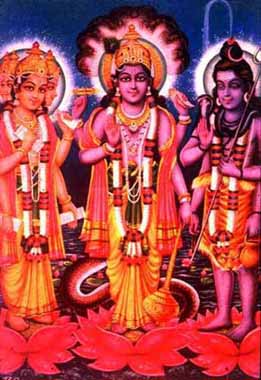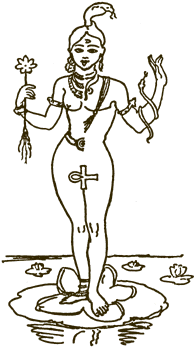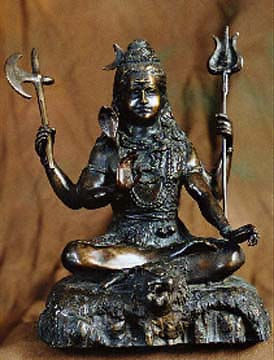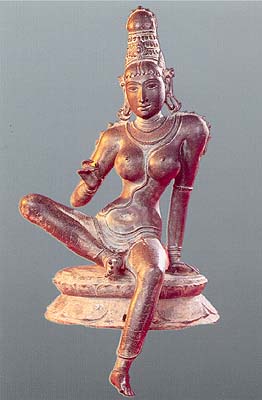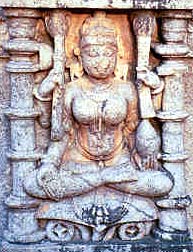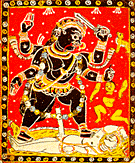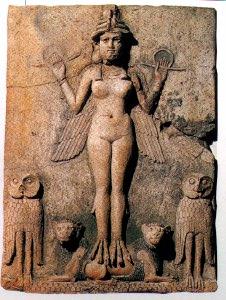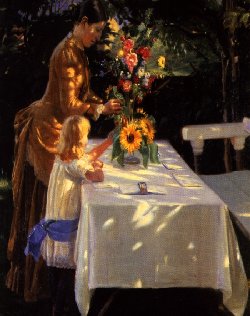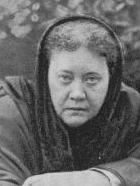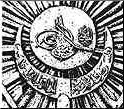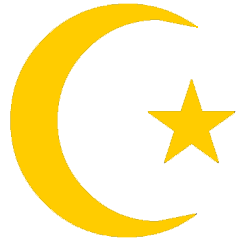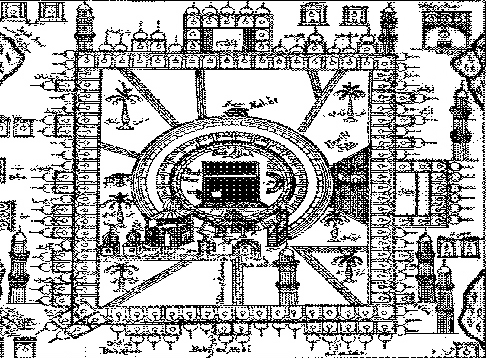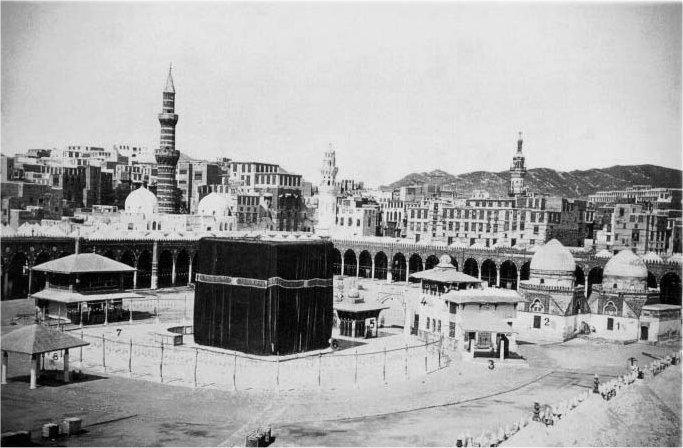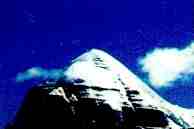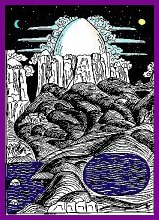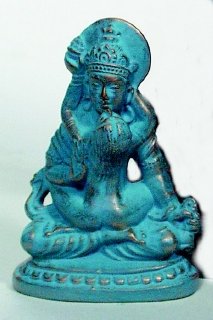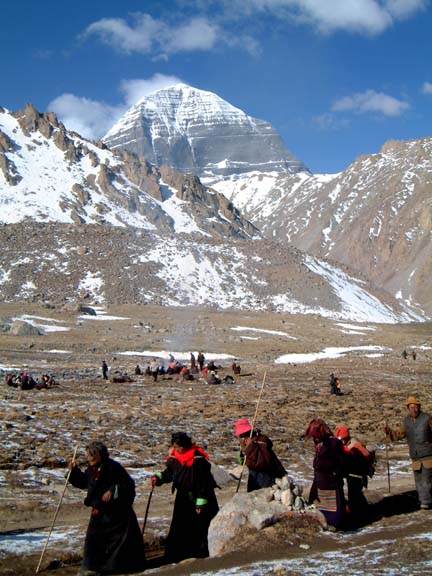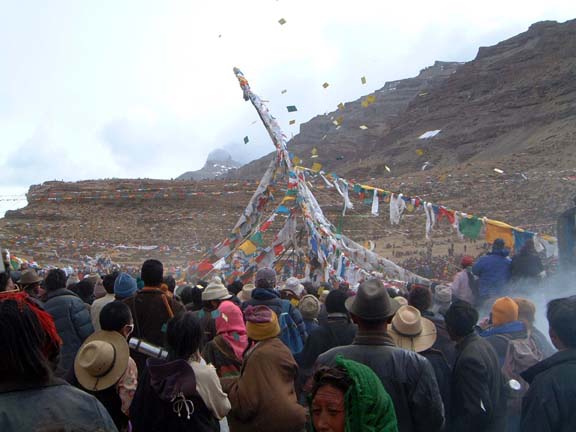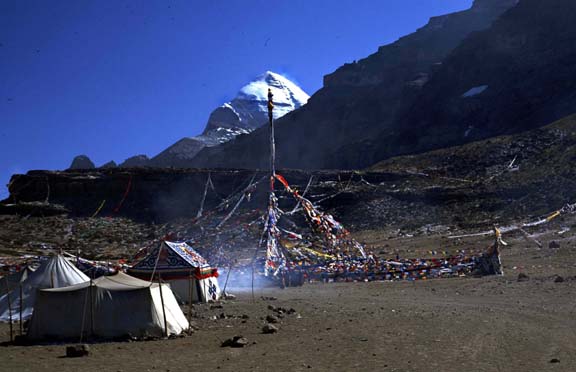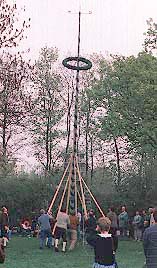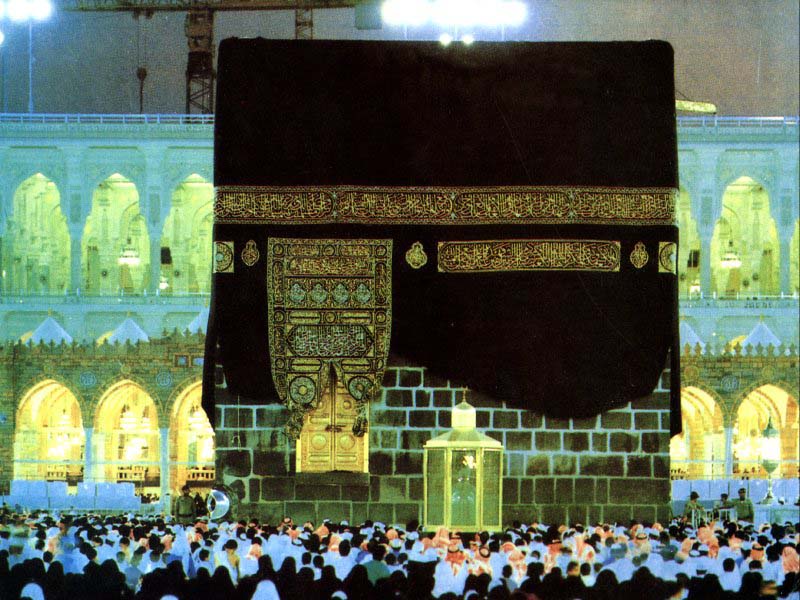"Arabia is an abbreviation. The original word even today is
Arbasthan. It originates in Arvasthan. As observed earlier Sanskrit "V" changes
into "B". Arva in Sanskrit means a horse. Arvasthan signifies a land of horses,
and as we all know Arabia is famous for its horses.
In the 6th and 7th
centuries A.D. a wave of effecting a complete break with the past spread over
West Asia. All links with the past were broken, images smashed, scriptures
destroyed, education discontinued and the entire West Asian region took a plunge
in abysmal ignorance which lasted for centuries thereafter and perhaps persists
to a certain extent even today because if in the whole world modern scientific
and educational developments find stubborn and entrenched resistance anywhere it
is in the West Asian countries. It is said that the late Saudi Arabia ruler
could not permit a radio broadcasting station opened in his own capital because
of opposition from his Maulavis. He then resorted to a stratagem. Once while he
had his council of Maulavis in attendance he had a radio set switched on to a
program of Koranic recitation broadcast from a small transmitting station set up
earlier without much ado. The Maulavis were delighted, so goes the report, to
hear the word of Allah coming to them as if from nowhere. The king told them
that what objections could they have to a mechanism which broadcast the word of
Allah. The Maulavis agreed and the small radio broadcasting project was at last
ratified.
According to
Encyclopedia Britannica and Séance Islamia the Arabs are ignorant of
their own history of the pre-Muslim era. By a strange euphemism they call it a
period of ignorance and darkness. Probably no other country in the world has
deliberately written off a 2,500 year period of their own history by
systematically stamping out and snapping all links with the past. They have
wiped the memories of preMuslim era off their minds. So while they chose to
remain ignorant of their past ironically enough it is they who dub the
pre-Muslim era as a period of ignorance.
Fortunately we can
still trace the history of that preIslamic Arabia. It is a well known adage that
there is no such thing as foolproof destruction of all evidence. The pre-Islamic
history of Arabia is the story of Indian Kshatriyas over that land, with the
people following the Vedic way of life.
In our attempt to
reconstruct the story of pre-Islamic Arabia we begin with the name of the
country itself. As explained earlier the name is fully Sanskrit. Its central
pilgrim centre, Mecca is also a Sanskrit name. Makha in Sanskrit signifies a
sacrificial fire. Since Vedic fire worship was prevalent all over West Asia in
pre-Islamic days Makha signifies the place which had an important shrine of fire
worship.
Coinciding with the
annual pilgrimage of huge bazaar used to spring up in Makha i.e. Mecca since
times immemorial. The annual pilgrimage of Muslims to Mecca is not at all an
innovation but a continuation of the ancient pilgrimage. This fact is mentioned
in encyclopedias.
VIKRAMADITYA
Evidence is now
available that the whole of Arabia was part of the great Indian King
Vikramaditya's vast empire. The extent of Vikramaditya's empire is one of the
main reasons for his world wide fame. Incidentally this also explains many
intriguing features about Arabia. It could be that Vikramaditya himself had this
peninsula named Arvasthan if he was the first Indian monarch to capture it and
bring it under his sway.
The second intriguing
aspect is the existence of a Shivalinga or the Mahadeva emblem in the Kaaba
shrine in Mecca. Before going into further details about the ancient Vedic
rituals and names still clinging to Muslim worship at Mecca we shall see what
evidence we have about Arabia having formed part of Vikramaditya's
dominions.
ANTHOLOGY OF
ANCIENT ARABIC POETRY: SAYAR-UL-OKUL
In Istanbul in Turkey,
there is a famous library called Makteb-e-Sultania which is reputed to have the
largest collection of ancient West Asian literature. In the Arabic Section of
that library is an anthology of ancient Arabic poetry. That anthology was
compiled from an earlier work in A.D. 1742 under the orders of the Turkish ruler
Sultan Salim.
The 'pages' of that
volume are made of HAREER - a kind of silk used for writing on. Each page has a
decorative gilded border. It may be recalled that gilding pages of sacred books
is an ancient custom associated with old Sanskrit scriptures found in Java and
other places. The anthology itself is known as SAYAR-UL-OKUL. It is divided into
three parts, the first part contains biographic details and the poetic
compositions of pre-Islamic Arabian poets. The second part embodies accounts and
verses of poets of the period beginning just after Prophet Mohammad up to the
end of Banee- Ummayya dynasty. The third part deals with later poets up to the
end of Khalifa Harun-al-Rashid's times. Incidentally "Banee" means "Vanee" and
Ummayya as in Krishnayya are Sanskrit names.
Abu Amir Abdul Asamai,
a distinguished Arabian bard who was the Poet Laureate of Harun-al-Rashid's
court has compiled and edited the anthology.
The first modern
edition of Sayar-ul-Okul anthology was printed and published in Berlin in A.D.
1864. A subsequent edition was published in Beirut in A.D. 1932. This work is
regarded as the most important and authoritative anthology of ancient Arabic
poetry. It throws considerable light on the social life, customs, manners and
entertainment forms in ancient Arabia. The book also contains an elaborate
description of the ancient Mecca shrine, the town and the annual fair known as
OKAJ which used to be held there every year. This should convince readers that
the annual Haj of the Muslims to the Kaaba is only a continuation of the old
fair and not a new practice.
But the OKAJ fair was
far from a carnival. It provided a forum for the elite and learned to discuss
the social, religious, political, literary and other aspects of the Vedic
culture then pervading Arabia. Sayar-ul-Okul asserts that the conclusions
reached at those discussions were widely respected throughout Arabia. Mecca,
therefore, followed the Varanasi tradition of providing a seat for important
discussions among the learned while the masses congregated there for spiritual
bliss. The principal shrines at both Varanasi in India and at Mecca in Arvasthan
were Shiva temples. Even to this day the central object of veneration at both
Mecca and Varanasi continues to be the ancient Mahadeva emblems. It is the
Shankara stone which Muslim pilgrims reverently touch and kiss in the
Kaaba.
ENTRY OF
NON-MUSLIMS FORBIDDEN
A few miles away from
Mecca is a big signboard which forbids entry to any non-Muslim in the area. This
is a reminder of the days when the Shrine was stormed and captured solely for
the newly established faith of Islam. The object obviously was to prevent its
recapture.
As the pilgrim
proceeds towards Mecca he is asked to shave his head and beard and to don a
special sacred attire. This consists of two seamless sheets of white cloth. One
is to be worn round the waist and the other over the shoulders. Both these rites
are remnants of the old Vedic practice of entering Hindu shrines, clean shaven
and with holy seamless spotless white sheets.
The main shrine in
Mecca which houses the Shiva emblem is known as the Kaaba. It is clothed in a
black shroud. This custom could also originate from the days when it was thought
necessary to discourage its recapture. According to encyclopedias Britannica
and Islamia the Kaaba had 360 images. Traditional accounts mention that one of
the deities among the 360 destroyed, when the shrine was stormed, was that of
Saturn, another was of the moon and
yet another was one called Allah. In India
the practice of Navagraha puja that is worship of the nine planets is still in
vogue. Two of these nine are the Saturn and the moon. Besides, the moon is
always associated with Lord Shankara. A Crescent is always painted across the
forehead of the Shiva emblem. Since the presiding deity at the Kaaba shrine was
Lord Shiva i.e. Shankara, the crescent was also painted on it.
It is that
crescent which is now adopted as a religious symbol of Islam. Another Hindu
tradition is that wherever there is a Shiva shrine the sacred stream of Ganga
that is the Ganges must also co-exist. True to that tradition a sacred fount
exists near the Kasba. Its water is held sacred because it was regarded as but
another Ganga since pre-Islamic times. Muslim pilgrims visiting the Kaaba shrine
go around it seven times. In no other mosque does this perambulation prevail.
Hindus invariably perambulate around their shrines. This is yet another proof
that the Kaaba shrine is a pre-Islamic Shiva temple where the Hindu practice of
perambulation is still meticulously observed.
Allah is a Sanskrit
word. In Sanskrit Allah, Akka and Amba are synonyms. They signify a goddess or
mother. The term Allah appears in Sanskrit chants while invoking goddess Durga
i.e. Bhavani. The Islamic word Allah for God is therefore not an innovation but
the ancient Sanskrit appellation retained and continued to be used by
Islam.
The seven
perambulations too are significant. At Hindu wedding ceremonies the bride and
bridegroom go round the sacred fire seven times. the practice of seven
perambulations around the Kaaba shrine in Mecca is, therefore, a Hindu Vedic
custom. It is also a proof that Mecca was Makha or the shrine of the sacred fire
around which worshippers made seven perambulations.
SAYAR-UL-OKUL tells us
that a pan-Arabic poetic symposium used to be held in Mecca at the annual Okaj
fair in pre-Islamic times. All leading poets used to participate in it. Poems
considered best were awarded prizes. The best poems engraved on gold plate were
hung inside the temple. Others etched on camel or goat skin were hung outside.
Thus for thousands of years the Kaaba was the treasure house of the best Arabian
poetic thought. This tradition was of immemorial antiquity. But most of the
poems got lost and destroyed during the storming of the Kaaba by prophet
Muhammad's forces.
SAYAR-UL-OKUL is a
poem by UMAR-BINE-HASSNAM (Poetic Title: ABBUL-HIQAM meaning Father of
Knowledge). He was an uncle of prophet Mohammed. He refused to get converted to
Islam. He died a martyr at the hands of Muslim fanatics who wanted to wipe out
non-Muslims. This poem was adjudged as the best in the annual fair at
Kaaba. |
